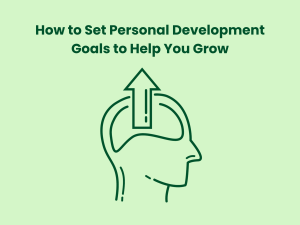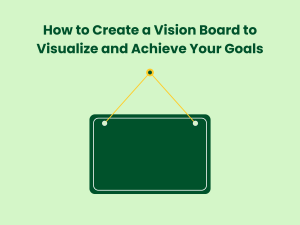Goal setting is critical for achieving success, but simply listing goals in a traditional linear format doesn’t fully convey connections and priorities. This is where mind mapping shines.
Mind mapping is a visualization technique that illustrates relationships between ideas using branches radiating from a central concept. This guide will walk through a simple 6-step process to create your first goal mind map.
You’ll learn how mind mapping promotes bigger-picture thinking, cross-goal connections, and motivation to achieve your most ambitious goals. Get ready to expand beyond bullet points!
What is Mind Mapping?
Mind mapping is a diagram that represents ideas and their connections visually. It centers around one core concept and branches outward to related topics and details. Mind maps utilize:
– A central concept
– Main branching categories
– Subtopics and details on branches
– Images, color, and visual associations
– A less linear format allowing your brain to think creatively.
Because mind maps tap into visual learning and associations, they boost memory, comprehension, and creativity compared to linear note-taking.
Benefits of Mind Mapping Goals
How specifically can mind mapping supercharge your goal-setting and achievement? Key benefits include:
– Improves clarity: Mapping out goals visually reveals vagueness and areas needing specificity.
– Shows connections: A mind map makes relationships between goals clear so you can align efforts.
– Sparks creativity: The flexibility of mind maps encourages you to think outside the box.
– Enhances memory: Visual cues help cement information better than text alone.
– Provides overview: Zoom out to see the big picture perspective.
– Boosts motivation: Colorful visuals engage your brain emotionally.
How to Create Mind Maps: Step-By-Step Guide
Now, let’s dive into the simple 6-step process to create your first goal mind map.
## Step 1: Define Central Goal
Start by clearly defining the overarching central goal at the heart of your mind map. Write it in the center of your workspace.
For example, your central goal may be to “Launch my freelance business successfully in 2022”. Whatever your key objective, frame it as the core of your map.
## Step 2: Add Main Goal Categories
Next, identify 4-6 main goal categories or priority areas and add them as main branches from your central goal.
For a freelancing goal, the main branches could be topics like target clients, services to offer, marketing tactics, needed skills to develop, website setup, etc.
The main branches break the goal down into primary focus areas.
## Step 3: Populate Goal Details
Now, populate details under each relevant branch. For your freelancing business, client branch details may include ideal customer profiles. Marketing branch details could include social media platforms, outreach emails, etc.
Use keywords, arrows, icons, and images to populate branches with as many specific action steps and sub-goals as possible. Add details until each branch feels built out.
## Step 4: Connect Related Goals
Look for any goals or actions that connect between branches. Use arrows, lines, or colors to link related elements across your map.
For example, a needed skill like copywriting connects to the services offered. Website setup links to marketing channels. Identify cross-over goals.
## Step 5: Customize Visually
Make your mind map engaging visually. Use colors, fonts, symbols, icons, drawings, or photos related to goals.
In our example, add images of target clients, illustrations of services, social media logos under marketing, etc. Visual cues aid memory and engagement. Make it colorful and fun!
## Step 6: Review and Adjust
Treat your mind map as an ongoing, evolving document. Review it often and make changes as goals shift, new ideas emerge, or progress is made.
Updating your mind map keeps it current. Don’t view it as static. Adjust the map as your goals develop. Stay agile.
Map Your Full Goal Ecosystem
Beyond core goals, also mind map factors like:
– Motivations behind the goal
– Potential obstacles and solutions
– Key resources needed
– Accountability partners
– Short-term milestones
Mapping the full context around your goal highlights gaps to address and opportunities to leverage. Expand beyond just a list of goals.
Uncover Hidden Connections Between Goals
Does tackling one goal help or hinder another? Mind mapping allows you to visually inspect for potential connections or conflicts between goals.
For example, a goal to get promoted at work may conflict with an exercise goal if promotions require much more time in the office. Understand the interplay between goals.
Break Goals Down Into Next Steps
Mind mapping encourages drilling down to convert big-picture goals into tangible day-to-day actions by constantly asking, “What steps will achieve this?”.
Deconstructing goals into bite-sized tasks makes big goals feel achievable. Mix zoomed-out and zoomed-in perspectives.
Inspire Yourself Through Visuals and Color
The plain text conveys facts. Colorful visuals spark emotions like passion and excitement that reinforce motivation.
Surround goals with images of desired results or encouraging words on visuals. Make mind mapping fun, not work! Leverage your brain’s response to aesthetics.
Start Mind Mapping Digitally or on Paper
You can start mind mapping using just paper, sticky notes, and pens/pencils if preferred! Or use online mind mapping software like MindNode, MindMeister, or Coggle to easily edit and share maps.
Choose the medium that allows you to brainstorm and modify maps most flexibly as goals evolve over time. The best method is one you’ll actually use regularly.
FAQ About Goal Mind Map
Q. Can I create a mind map on paper first and then digitize it afterward?
A. Absolutely! Draft on paper when brainstorming without limitations at first. Then, create a digital version to keep updating as your goals progress. Use both tools.
Q. What do I do if my mind map starts feeling cluttered or disorganized?
A. Step back and restructure it into logical groupings and hierarchies. Break it into multiple sheets or slides to organize thoughts. Treat it like an outline that can shift. Untangle crossed branches.
Q. Can I use mind mapping for goals not related to my career?
A. Yes, mind mapping works incredibly well for personal goals, too, like health, relationships, hobbies, travel, and more. The technique helps set and achieve any life goal more clearly.
Q. Is mind mapping a skill that takes time to master?
A. As with any technique, you’ll get better with practice. But anyone can start mind mapping immediately to benefit. Focus on capturing your thoughts – you can refine the mind map format later as you learn.
Conclusion
Mind mapping is a game-changing tool that evolved my goal-setting process for the better. Visually mapping goal categories, connections, next steps, and motivations provides an interactive way to finally conquer the goals that have been rattling around your mind.
Commit to sitting down this week and mind mapping your most important goal following the 6-step process above. Get your thoughts out of your head and onto a mind map. Bring your vision to life branch by branch!
What goal will you create your first mind map for this week? Get excited to expand how you think about and achieve your biggest goals!



